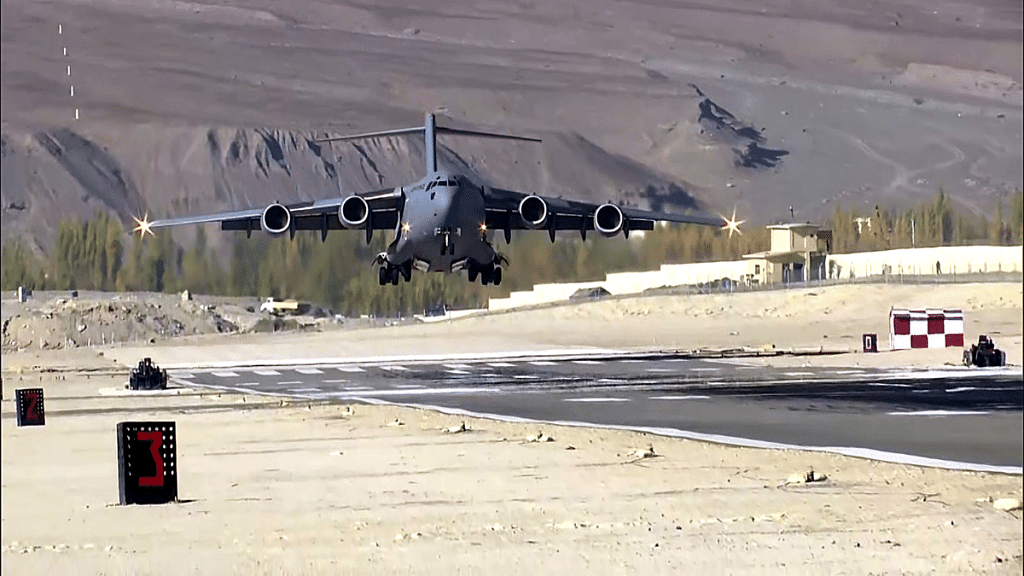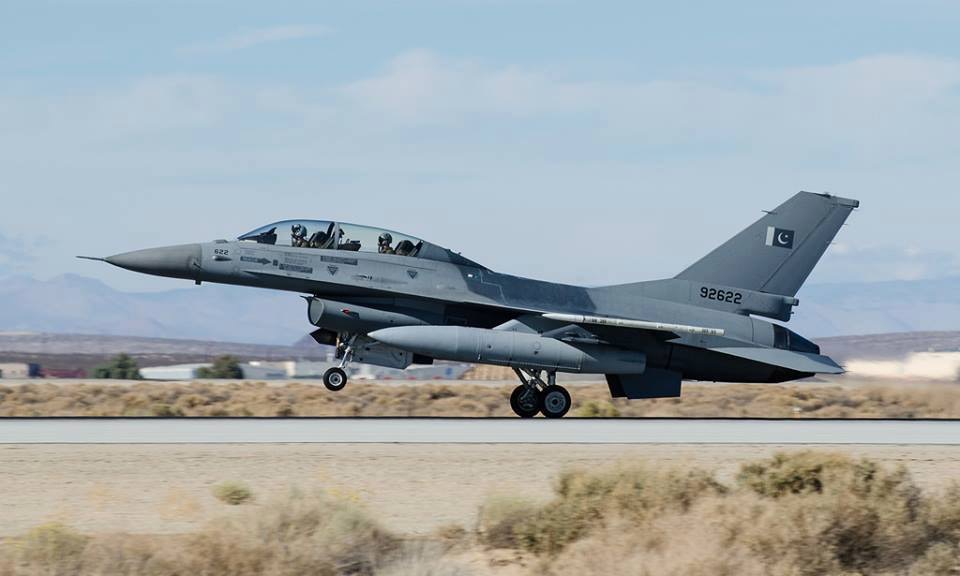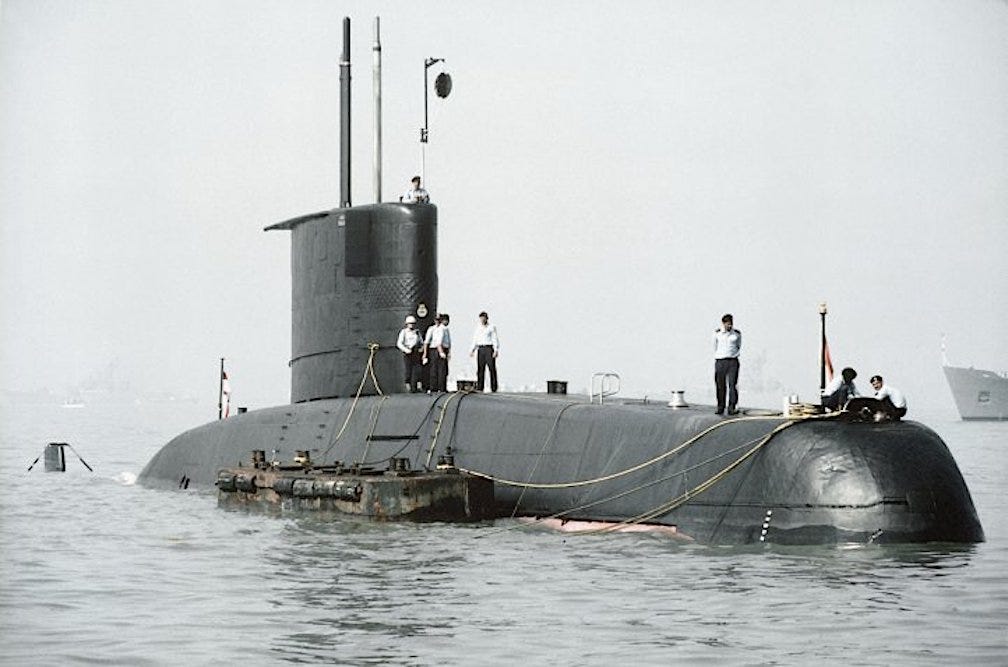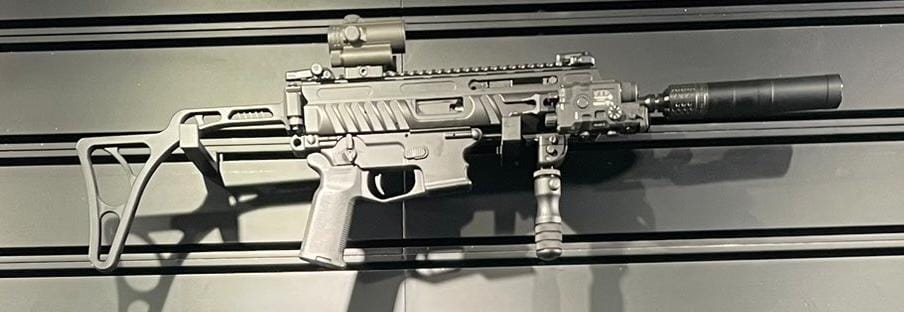SOURCE: AFI


In a landmark achievement for the Indian Air Force (IAF), a massive C-17 Globemaster-III aircraft successfully landed at the high-altitude Kargil airfield near the Line of Control (LoC) with Pakistan on Wednesday morning. This “trial run” marks the first time the gigantic four-engine transporter has touched down at the strategically vital airstrip, significantly enhancing the IAF’s ability to airlift troops and heavy equipment to forward areas along India’s northern frontier.
The C-17, which took off from its home base at Hindon Air Force Station on the outskirts of Delhi, navigated challenging terrain to land at the Kargil airstrip. Situated at an altitude of over 9,700 feet and surrounded by towering mountains on all sides, the airfield presents a unique set of operational difficulties, including thin air and limited maneuvering space. The successful landing underscores the IAF’s growing proficiency in operating heavy-lift aircraft in some of the most demanding environments.
Continue readingSOURCE: AFI


Mumbai’s Colaba police have registered a case against officials of Ajay Airproducts Pvt Ltd, a gas supplier, for allegedly supplying an incorrect and flammable refrigerant to the Indian Navy, which triggered a fatal explosion aboard the destroyer INS Ranvir in January 2022. The incident, which occurred at the Naval Dockyard in Mumbai, claimed the lives of three sailors and injured 11 others, leaving the 4,000-tonne warship severely damaged.
The blast took place on January 18, 2022, in the air conditioning compartment of INS Ranvir while the vessel was docked at the Naval Dockyard in Colaba. According to police officials aware of the matter, the case was filed on Wednesday based on findings from a Board of Inquiry constituted by the Indian Navy to investigate the incident. The inquiry revealed that Ajay Airproducts had supplied a flammable refrigerant, Hydrofluorocarbon-152 (R152), instead of the requested non-combustible Hydrochlorofluorocarbon-22 (R22), commonly known as Freon R22.
Continue readingSOURCE: IDRW.ORG


India’s Stealth Wing Flying Testbed (SWiFT) Unmanned Combat Aerial Vehicle (UCAV), a 1-ton technology demonstrator, is set to undergo significant design refinements as it transitions from a developmental platform into a full-fledged program for the Indian Air Force (IAF).
Originally conceived by the Defence Research and Development Organisation (DRDO) to validate critical technologies for stealth and unmanned flight, the SWiFT UAV has now received the IAF’s approval to evolve into an operational combat system, marking a pivotal moment in India’s quest for advanced aerial capabilities. This development, announced in early 2025, reflects the IAF’s growing commitment to integrating stealth UCAVs into its arsenal to address modern warfare challenges.
Continue readingSOURCE: IDRW.ORG


India’s airborne early warning and control (AEW&C) capabilities are set to receive a significant boost with the upcoming Netra Mk1A and MkII programs. These advanced airborne warning and control systems (AWACS), developed under the aegis of the Defence Research and Development Organisation (DRDO), will incorporate state-of-the-art gallium nitride (GaN)-based transmit/receive modules (TRMs) in their active electronically scanned array (AESA) radar plates.
This marks a substantial technological leap over the existing Netra Mk1, which relies on solid-state gallium arsenide (GaAs)-based radar technology developed by the Electronics and Radar Development Establishment (LRDE) in Bengaluru. The transition to GaN-based systems promises enhanced performance, greater efficiency, and superior operational capabilities for the Indian Air Force (IAF).
Continue readingSOURCE: AFI


Hyderabad-based VEM Technologies made waves at Aero India 2025, held at Air Force Station Yelahanka in Bengaluru, by showcasing its indigenously developed Ajita-SR (Short Range) and Ajita-LR (Long Range) Surface-to-Air Missile (SAM) systems. These advanced air defense solutions, displayed prominently at the biennial aerospace exhibition, underscore VEM’s growing prowess in delivering cutting-edge military technology tailored to India’s strategic needs. With detailed specifications revealed, the Ajita series promises to bolster the Indian Armed Forces’ ability to counter a wide spectrum of aerial threats, from low-altitude drones to high-speed aircraft.
The unveiling aligns with India’s push for self-reliance in defense manufacturing under the Aatmanirbhar Bharat initiative. VEM Technologies, a key private-sector player with over three decades of experience in aerospace and defense, leveraged Aero India 2025 to demonstrate its capability to design, develop, and produce world-class missile systems. The Ajita-SR and Ajita-LR, with their distinct yet complementary roles, position VEM as a vital contributor to India’s evolving air defense architecture.
Continue readingSOURCE: AFI


In a significant move to bolster India’s defense manufacturing capabilities, the Indian Air Force (IAF) has recommended to the Ministry of Defence (MoD) that a private sector company be entrusted with manufacturing the fighter jet selected through the Multi-Role Fighter Aircraft (MRFA) tender. The tender, which aims to procure 110 advanced fighter jets, is expected to be floated later in 2025. This recommendation comes as part of a broader set of suggestions recently submitted by a high-level MoD panel tasked with addressing the IAF’s critical capability gaps.
The MRFA program is a cornerstone of the IAF’s modernization strategy, intended to bridge the gap between its indigenous Light Combat Aircraft (LCA) Tejas variants and the in-service Sukhoi Su-30 MKI fleet, while addressing the phasing out of aging aircraft like the MiG-21. With the IAF’s squadron strength currently at 31 against a sanctioned level of 42, the need for rapid induction of new jets is urgent. The MRFA tender, under the “Buy Global – Make in India” framework, mandates significant local production and technology transfer, aligning with the government’s push for self-reliance in defense.
Continue readingSOURCE: AFI


The Indian Air Force (IAF) faces an unprecedented challenge: preparing for a potential two-front war against Pakistan and China, two adversaries with growing military capabilities and a history of coordination against India. With its fighter squadron strength dwindling to 31 against a sanctioned 42, the IAF has often found itself mired in debates over procurement delays and shortages.
However, instead of fixating on the slow pace of acquiring new combat aircraft, the IAF must leverage the Centre’s allocated capital to bolster its force multipliers—assets that enhance combat effectiveness without solely relying on numbers. This strategic shift is critical to deter and defeat threats from both western and eastern fronts.
Continue readingSOURCE: AFI


Pakistan’s Air Force (PAF) finds itself at a crossroads, juggling modernization ambitions with the realities of an aging fleet. Despite buzz about acquiring advanced Chinese fighters—the J-10CE and the fifth-generation J-35A—Pakistan remains steadfast in its desire to bolster its F-16 inventory with additional Block 52 jets. This pursuit intensified amid rumors that the United States might sell F-35A stealth fighters to India, prompting Islamabad to seek 18 to 36 more F-16s in Block 50 or V configurations. With a fleet dominated by older Mid-Life Update (MLU) Block 15/20 jets nearing the end of their service life, and a small contingent of newer Block 50/52 aircraft, the PAF is racing to sustain its combat edge beyond 2030-35.
The F-16 Fighting Falcon has long been the PAF’s premier fighter, a symbol of its qualitative edge since the first Block 15 jets arrived in 1982 under the Peace Gate programs. Today, the fleet totals around 76 aircraft: 45 MLU-upgraded Block 15/20 jets, 13 ex-Jordanian Block 15 Air Defense Fighters (ADF), and 18 newer Block 50/52 jets delivered between 2010 and 2012 via the Peace Drive initiative. The Block 50/52 aircraft, equipped with AN/APG-68(V)9 radars and AIM-120C-5 AMRAAMs, remain the PAF’s most capable platforms, boasting a service life that could extend well into the 2030s with proper maintenance.
Continue readingSOURCE: AFI


As the Indian Space Research Organisation (ISRO) gears up to launch the Bharatiya Antariksh Station (BAS)—India’s ambitious space station project slated for completion by 2035—the Extraterrestrial Manufacturing (ExTeM) team at IIT-Madras is working tirelessly to ensure its safety in the unforgiving vacuum of space.
Leading the charge is a groundbreaking initiative to develop metal foam, a lightweight yet resilient material designed to shield the station from micro-meteoroids and space debris. Complementing this effort, the team has constructed a state-of-the-art Microgravity Drop Tower—the fourth largest of its kind globally—to study materials under zero-gravity conditions, alongside pioneering welding techniques tailored for space environments. This fusion of innovation positions IIT-Madras at the forefront of India’s spacefaring future.
Continue readingSOURCE: RAUNAK KUNDE / NEWS BEAT / IDRW.ORG


In a groundbreaking development, a high-level Defence Ministry committee has accepted the Indian Air Force’s (IAF) recommendation to potentially include 5th-generation fighter jets in the Multi-Role Fighter Aircraft (MRFA) tender for 110 jets, according to sources close to idrw.org, this marks the first time India could see offers for 5th-generation platforms under the MRFA framework, with provisions for some level of Transfer of Technology (ToT) and local manufacturing. While the move signals a strategic leap in India’s air combat capabilities, uncertainties linger over which 5th-generation jets will come with ToT and the establishment of a Final Assembly Line (FAL) in the country.
The MRFA tender, valued at over $20 billion, aims to bolster the IAF’s dwindling squadron strength—currently at 31 against a sanctioned 42—by replacing aging MiG-21s, Jaguars, and Mirage 2000s. Traditionally focused on 4.5-generation fighters like the Rafale, F/A-18 Super Hornet, and Eurofighter Typhoon, the tender’s expansion to include 5th-generation options reflects growing regional threats, notably China’s J-20 stealth fleet and emerging 6th-generation prototypes.
Continue readingSOURCE: RAUNAK KUNDE / NEWS BEAT / IDRW.ORG


In a significant development for India’s aerospace ambitions, French aerospace giant Dassault Aviation is exploring the establishment of a final assembly line (FAL) for its Rafale fighter jet in India, as reported by L’Usine Nouvelle on March 5, 2025. CEO Éric Trappier signaled the move as a strategic response to anticipated large orders from India, stating, “India is preparing major orders, and we could certainly open a final assembly line in that country to be able to absorb this new workload.”
Dassault is already grappling with heightened global demand for the Rafale, a 4.5-generation multirole fighter renowned for its versatility and advanced avionics. The company delivered 36 Rafales to India under a €7.87 billion (approximately $9.4 billion) contract signed in 2016, with all aircraft handed over by 2022.
Continue readingSOURCE: RAUNAK KUNDE / NEWS BEAT / IDRW.ORG


The Indian Navy is gearing up for a significant overhaul of its submarine fleet, with plans to retire its Shishumar-class submarines once newer vessels from Project-75I begin to join the service from 2033 onwards. This strategic decision was highlighted by naval officials in discussions with idrw.org, marking a pivotal shift in the Navy’s underwater capabilities.
Currently, the Indian Navy operates a quartet of Shishumar-class submarines, which are based on the German Type 209 design. These submarines have been a vital part of India’s naval strength since their commissioning between 1986 and 1994.
Continue readingSOURCE: AFI


In a significant leap for India’s maritime defence capabilities, the Indian Navy is set to benefit from a pioneering collaborative research project between the National Institute of Technology (NIT) Rourkela and the Defence Research and Development Organisation (DRDO). This initiative, focused on developing advanced underwater tiles to enhance the stealth of Indian Navy submarines, promises to reduce their detectability by enemy sonar systems, bolstering India’s naval power and advancing its self-reliance in defence technology. With a budget of ?1.4 crore, this project not only underscores India’s commitment to indigenous innovation but also hints at its potential global impact.
Submarines are the silent sentinels of naval warfare, relying on stealth to evade detection and strike with precision. The primary goal of this NIT Rourkela-DRDO collaboration is to develop cutting-edge underwater tiles that can absorb or scatter sound waves, making Indian Navy submarines nearly invisible to enemy active sonar systems. Sonar, which detects submerged objects by emitting sound pulses and analyzing their echoes, is a submarine’s greatest vulnerability. By minimizing acoustic signatures, these tiles could give Indian submarines a decisive edge in contested waters, particularly in the Indian Ocean Region (IOR), where strategic rivalries with China and Pakistan are intensifying.
Continue readingSOURCE: AFI


The Indian Air Force (IAF) is reportedly losing confidence in Hindustan Aeronautics Limited (HAL), the state-owned aerospace giant tasked with producing fighter jets to bolster India’s air power. This erosion of trust, emerging stems from persistent delays, quality concerns, and HAL’s struggles to meet the IAF’s operational timelines—issues that threaten India’s defense preparedness at a time of heightened regional tensions.
With the IAF’s squadron strength dwindling and indigenous programs like the Tejas facing setbacks, this rift signals a critical juncture for India’s aerospace ecosystem. Experts and observers argue that urgent intervention from the Prime Minister’s Office (PMO) is essential to overhaul HAL, ensuring it aligns with the nation’s strategic imperatives under the “Make in India” and “Aatmanirbhar Bharat” initiatives.
Continue readingSOURCE: AFI


In a significant stride toward self-reliance in defense manufacturing, Bengaluru-based SSS Defence has recently unveiled two groundbreaking indigenous firearms: a Submachine Gun (SMG) and a Designated Marksman Rifle (DMR). This development marks yet another milestone for the private Indian firm, which has steadily emerged as a key player in the country’s small arms sector. Known for its innovative designs and commitment to meeting the operational needs of India’s armed forces and law enforcement agencies, SSS Defence is reinforcing its reputation with these latest offerings, unveiled as of early March 2025.
The announcement, highlighted in posts on X on March 2, 2025, underscores the company’s ongoing efforts to innovate and compete with global benchmarks. These firearms are designed to address specific tactical needs: the SMG for close-quarter combat (CQB) and the DMR for precision engagements at extended ranges. By developing these weapons in-house, SSS Defence is reducing India’s reliance on imported small arms and positioning itself as a potential exporter in the global defense market.
Continue reading